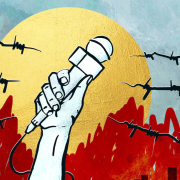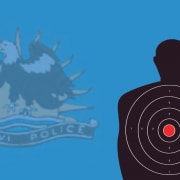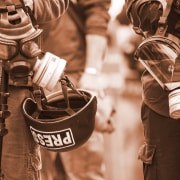|
Getting your Trinity Audio player ready...
|
By Kwazi Dlamini
While the world continues to promote free press and the safety of journalists, this has not made the lives of said journalists any safer. Rather, those responsible for the death of and threats towards journalists continue to do so with impunity. This is according to Threats that Silence, the latest research conducted by Unesco about trends in the safety of journalists. The recently-released global report looks at the treatment of journalists globally and narrows down its focus to cover regional trends.
Journalism remains one of the more volatile professions in the world as the workings of being an investigative journalist, especially, include probing, receiving and sharing information with the public, more often than not to the non-amusement of those implicated. This leads to a hostile working environment where journalists are threatened with harassment, imprisonment, violence or sometimes death.
But journalists are whistle-blowers too, and their work, as a vital link in the chain of exposing corruption, can change the world. The Panama Papers, the Russian Laundromat, the Gupta Leaks, the Troika Laundromat, and many more – the documents themselves may not all have been uncovered by journalists, but it was journalists who combed the data, followed the money, and made sense of the information to expose the machinery and the methods used by those implicated. This in turn has provided law enforcement agencies with solid data upon which they can build cases.
As in the case of any whistle-blower, investigative journalists face extensive risks.
The chilling effect is a metaphorical term associated with such infringements on freedom of expression. It is defined and described in different ways by different organisations, but in the journalistic context it usually refers to steps taken by a person or entity to deter journalists from conducting their investigation or releasing information into the public domain, whether by a smear campaign against the journalist, the threat of litigation, or worse.
An academic paper titled The concept of chilling effect sets out definitions and descriptions according to legal principles, and while focused mainly on the EU, is useful to anyone interested in the topic.
Fewer killed in last five years
Overall, there has been little improvement in the fight against the threat to journalists.
The Unesco report acknowledges that the number of journalists killed has decreased in the past five years but the statistics are still worrying. It further acknowledges that some of the deaths happen in regions that are experiencing armed conflicts, but even those numbers have decreased – the issue then becomes the impunity that seems to come with killing of journalists.
The report says that nine in 10 journalist murders remain unsolved. This is usually the case in places where the number of journalist killings is high – meaning those involved in these crimes bask in impunity, and that emboldens a vicious circle.
Approximately 1 229 journalists have been killed since Unesco began systematically monitoring journalist killings and associated impunity in 2006. Only 163 of those cases are now considered fully resolved.
The Arab region registers the highest level of impunity, as in previous years, with 98% of cases considered unresolved. Asia and the Pacific follows with 89% of murders of journalists unresolved. Africa is a close third, at 87%. The report notes that killings of journalists in the Arab and African regions can also be attributed to armed conflict in certain parts of these regions.
Murder is not the only form of harassment shown towards journalists, according to the report. Imprisonment is up there with murder – it is used to gag journalists and regions with fewer killings of journalists usually have a higher imprisonment rate of journalists. According to Reporters Without Borders, at the time of writing this article there are 479 media professionals in prisons around the world – 461 journalists and 18 media workers. Since the beginning of the year, 26 journalists and two media workers have lost their lives.
While these trends are on global focus, Unesco emphasises that there are several countries which do not exhibit journalist killings or imprisonment. However, even in those countries journalists are not necessarily safe as they also experience other forms of harassment and threats.
The rise of the internet as a news reporting channel has exposed journalists to online harassment and cyberbullying. Unesco research shows that seven out of 10 women have experienced online harassment and violent threats for doing their work.
South African journos not safe
South Africa is one of the countries where journalists experience high levels of media freedom without regular fears of threats to their lives. Nevertheless, they are not immune to other forms of harassment and bullying.
According to Reggy Moalusi, the executive director at the South African National Editors’ Forum (Sanef) the harassment of journalists in South Africa is increasing. It is particularly on the rise when it comes to aspects such as intimidation, harassment and online bullying and Moalusi echoed the Unesco report, that most of the online bullying is aimed towards women journalists.
“There are some worrying sectors of our society that still see journalists as a threat, and how they need to be eliminated from the public discourse of free debate,” Moalusi told Corruption Watch.
He added that Sanef receives many reports from journalists being harassed for doing their job, but the organisation has not established a formal system to record these as statistics. However, it is looking to do so in the near future.
Sanef knows of at least 59 separate incidents where journalists have been attacked either verbally or physically while working. The attacks have all happened in the last five years and the main perpetrators, the organisation said, are the South African Police Service, political parties and their supporters, criminals, and communities on which reporting was focused.
These attacks on journalists undermine media freedom and can have the undesired chilling effect on their ability and willingness to perform their work.
Journalists should be afforded justice and protection and enjoy their work without fear of their life or safety – or that of their immediate family members.








